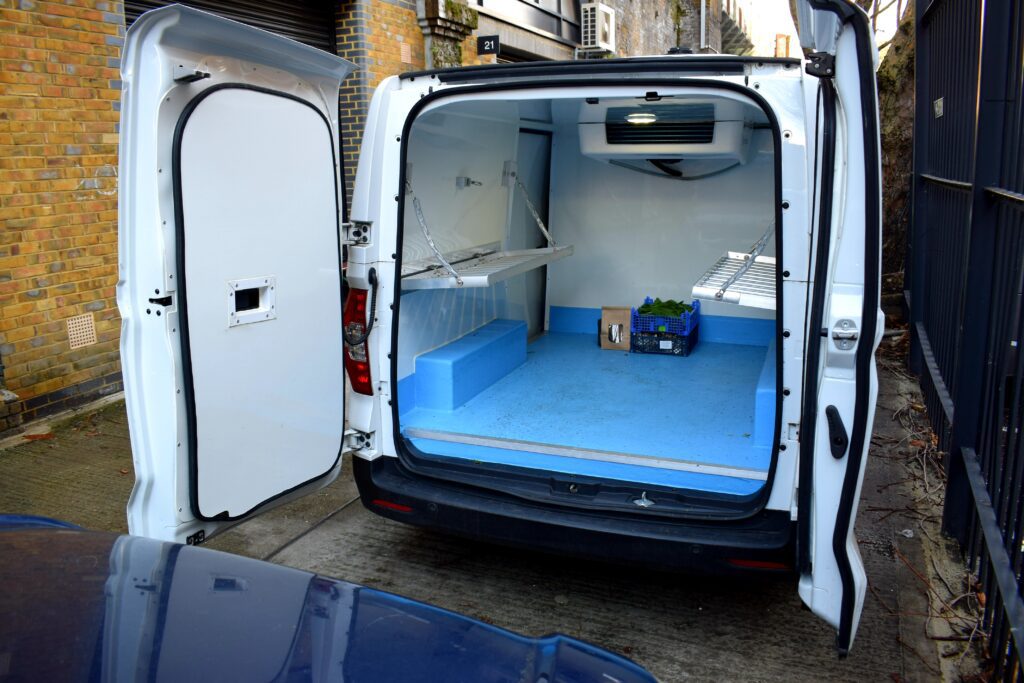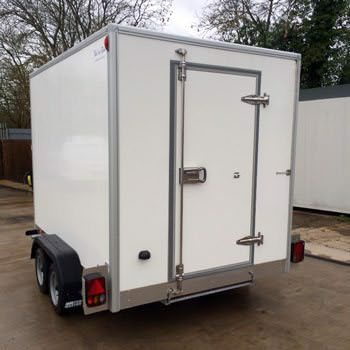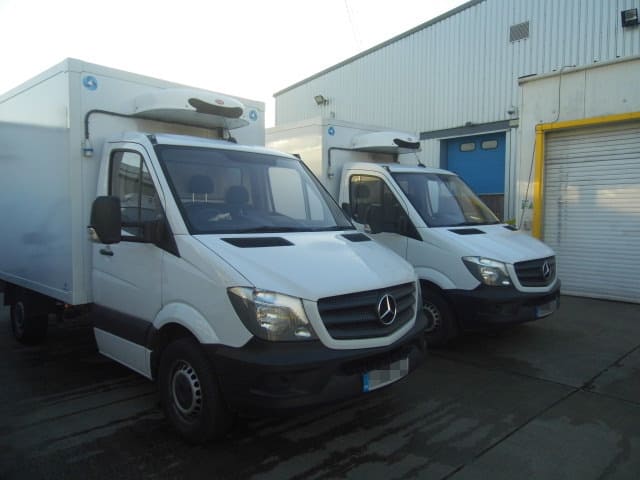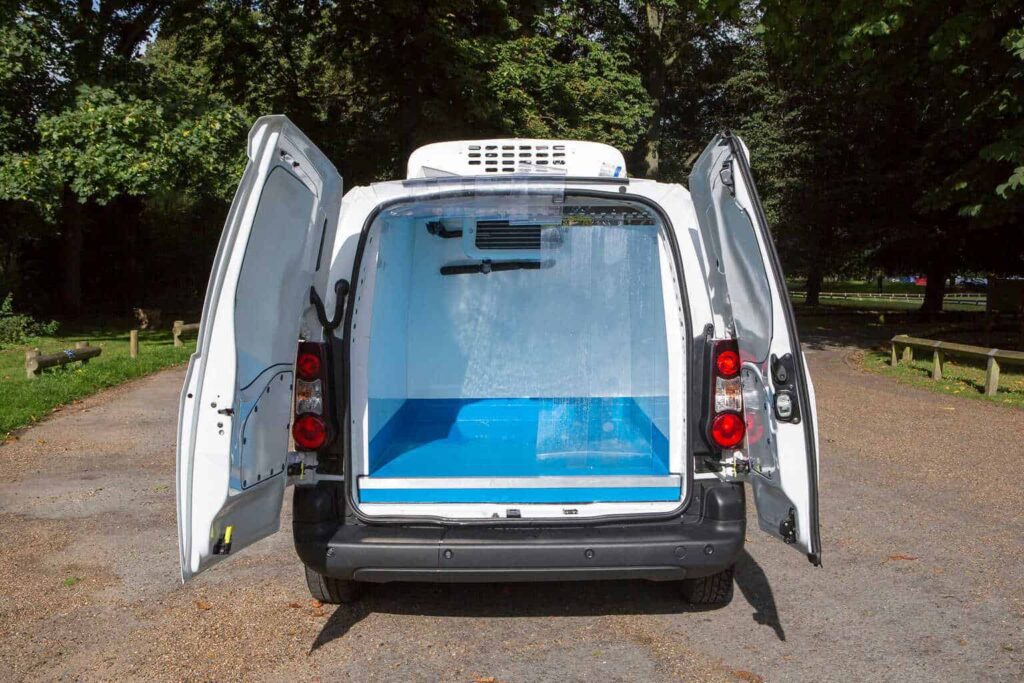Refrigerated vans, commonly referred to as “fridge vans,” play a pivotal role in the transportation sector by enabling the safe and efficient movement of perishable goods across distances. These specialized vehicles are equipped with refrigeration units that maintain a controlled temperature inside their cargo area, a feature critical for preserving the quality and safety of temperature-sensitive products such as food, pharmaceuticals, and certain chemicals.
In the context of modern logistics and supply chains, the importance of refrigerated vans cannot be overstated. As global trade and the demand for fresh produce year-round continue to rise, these vehicles have become indispensable in linking producers with markets, enabling the delivery of fresh and frozen goods to consumers in pristine condition. In an era increasingly focused on the efficiency and sustainability of supply chains, refrigerated vans play a crucial role in minimizing waste, optimizing stock levels, and ensuring that the transport of perishable goods is conducted as efficiently as possible. Their role underscores a critical element of contemporary logistics, facilitating not only the globalization of food markets but also ensuring that vital medicines reach those in need under the required conditions.
History of Refrigerated Goods Transportation
The transportation of refrigerated goods has a rich history, marked by innovative methods of preservation and advancements in technology. This evolution reflects humanity’s ingenuity in extending the shelf life of food and other perishable items, from ancient preservation techniques to modern refrigerated logistics.
Long before the advent of mechanical refrigeration, ancient civilizations employed various methods to preserve food, including smoking, salting, pickling, and drying. Ice and snow were also utilized to cool food in warmer climates. Icehouses, filled during the winter months, played a crucial role in keeping produce fresh through the warmer seasons. These methods, while effective to a degree, were limited by climate, season, and geography, constraining the distance over which perishable goods could be transported.
The landscape of food preservation underwent a significant transformation with the invention of mechanical refrigeration systems in the 19th century. The first practical refrigeration machines, developed in the 1830s and 1840s, utilized compressed air and volatile liquids like ammonia to create cooling effects. However, it was not until the latter half of the 19th century that these systems were refined and became more widespread, particularly in the brewing and meat-packing industries, heralding a new era in food storage and transportation.
The transition from ice-cooled compartments to mechanically refrigerated vans marked a pivotal development in the history of refrigerated transport. Early refrigerated vans, which emerged in the late 19th and early 20th centuries, were initially simple insulated boxes on wheels, often cooled with ice blocks. The advent of mechanical refrigeration units, which could be fitted onto trucks and trailers, transformed these rudimentary vehicles into the complex, technology-driven vans we see today. This evolution enabled the precise control of temperature, regardless of external conditions, greatly expanding the potential for transporting perishable goods over long distances.
Several key milestones and technological advancements have marked the history of refrigerated transportation:
- 1877: The first successful shipment of refrigerated beef from the United States to Europe.
- 1930s: The introduction of portable air-cooling units, which could be attached to trucks and trailers, drastically improving the efficiency of refrigerated transport.
- 1950s: The development of the modern refrigerated truck with integrated refrigeration units, leading to the widespread adoption of refrigerated transport in the logistics industry.
- Recent Decades: Advancements in insulation materials, refrigeration technologies, and real-time temperature monitoring systems have further enhanced the efficiency and reliability of refrigerated vans.
These developments underscore a journey of continuous improvement and adaptation, enabling today’s global food supply chains to deliver perishable goods to consumers in every corner of the world, maintaining quality and freshness from farm to fork.
How Refrigerated Vans Work
The operation of refrigerated vans, or fridge vans, is pivotal to the modern transportation of perishable goods, ensuring items like food and pharmaceuticals have optimal temperatures during transit.
The refrigeration process in vans operates on the principle of heat removal. Essentially, it involves absorbing heat from the interior of the van and then expelling it to the outside environment, thus maintaining a cooler temperature inside. This is achieved through a cycle that involves the compression, condensation, expansion, and evaporation of a refrigerant—a substance that changes state from gas to liquid and back again at designated temperatures and pressures.
A refrigerated van system comprises several key components, each playing a vital role in the cooling process:
- Insulation Materials and Methods: Insulation is critical for minimizing the transfer of heat into the van’s cargo area. Effective insulation materials include polyurethane foam, which has a high thermal resistance. The van walls, floor, and ceiling are lined with this insulation, forming a barrier that keeps external heat out and maintains the desired internal temperature.
- Refrigeration Unit Types and Operation: Refrigeration units in vans are often split systems, consisting of an evaporator inside the cargo area and a condenser mounted on the exterior. These units work by circulating refrigerant through the system, absorbing heat inside the van and releasing it outside. The choice of refrigeration unit depends on the size of the van and the specific cooling requirements, with options ranging from simple, direct-drive systems powered by the van’s engine to more complex, standalone units that operate independently.
- Power Sources for Refrigeration Units: The most common power source for refrigeration units in vans is the vehicle’s engine, which drives the compressor through a belt system. However, for operations requiring refrigeration during stationary periods, external electric power sources (e.g., plug-in electric stand-by systems) can maintain the cooling system when the engine is off.
- Temperature Control and Monitoring Technologies: Modern refrigerated vans are equipped with sophisticated temperature control systems that allow for precise regulation of the internal environment. These systems typically include digital thermostats, sensors, and sometimes GPS-enabled technology, which not only monitor the temperature in real-time but also provide tracking and logging capabilities for audit purposes.
Maintenance and Upkeep of Refrigeration Systems
Regular maintenance is essential for the reliable operation of refrigerated vans. This includes routine checks of the refrigeration unit, such as inspecting for leaks in the refrigerant system, ensuring the compressor and fans are functioning correctly, and cleaning the condenser and evaporator coils to maintain efficiency. Proper sealing of the cargo area is also crucial to prevent air exchange with the outside environment. Scheduled maintenance not only extends the lifespan of the refrigeration system but also ensures that it operates at optimal efficiency, keeping running costs to a minimum and preventing spoilage of perishable goods.
Types of Refrigerated Vans
The diversity in refrigerated vans caters to the varying needs of industries relying on the safe transportation of temperature-sensitive goods. These vans differ in size, refrigeration capabilities, and insulation, making certain models more suited to specific tasks than others.
- Small Refrigerated Vans are ideal for short-distance deliveries or urban distribution where larger vehicles might face access issues. Despite their compact size, these vans are sufficiently insulated and equipped with powerful refrigeration units to maintain the required temperatures for fresh produce, dairy, and small-scale pharmaceutical deliveries.
- Medium Refrigerated Vans strike a balance between maneuverability and cargo space, making them suitable for a wide range of applications, including the delivery of perishable food items and pharmaceuticals. They can handle more substantial loads than their smaller counterparts, making them a popular choice for medium-scale logistics operations.
- Large Refrigerated Vans are designed for long-haul transportation, offering extensive cargo space and advanced refrigeration capabilities. These vehicles are essential for large-volume deliveries, including wholesale food distribution and the transport of temperature-controlled non-food products over significant distances.
The effectiveness of a refrigerated van largely depends on its refrigeration capabilities and insulation quality. Vans intended for freezing temperatures are equipped with more robust refrigeration units and thicker insulation to prevent heat ingress, essential for frozen goods transport. In contrast, vans transporting fresh produce or flowers might focus more on maintaining a consistent cool temperature, necessitating different insulation materials and refrigeration strategies.
Uses of Refrigerated Vans
Refrigerated vans play a crucial role across several industries, ensuring the safe and efficient transport of a wide range of temperature-sensitive goods.
In the food industry, refrigerated vans are indispensable for maintaining the cold chain from producers to consumers. They transport dairy products, meat, fruits and vegetables, and frozen products, ensuring these items remain fresh and safe for consumption upon reaching retail outlets, restaurants, and consumers.
The pharmaceutical industry relies on refrigerated vans to transport medicines, vaccines, and other medical supplies that require controlled temperatures. The vans’ precise temperature management ensures these critical items retain their efficacy.
Refrigerated vans also serve industries beyond food and pharmaceuticals, transporting goods like chemicals and artworks that require specific temperature conditions to prevent damage or degradation during transit.
For event catering and mobile food services, refrigerated vans offer a flexible solution to transport and serve food at the optimal temperature, ensuring quality and safety for consumers at festivals, weddings, and corporate events.
Buying vs Hiring/Leasing Refrigerated Vans
Deciding whether to buy or hire/lease a refrigerated van involves weighing several factors, from initial costs to operational considerations. This decision can significantly impact the efficiency and flexibility of businesses relying on temperature-controlled transportation.
Factors to Consider When Buying a Refrigerated Van
- Initial Cost and Financing Options: The upfront cost of purchasing a refrigerated van can be substantial. Prospective buyers need to assess their budget and consider various financing options, including loans and leasing, to spread the cost over time.
- Operating Costs (Fuel, Maintenance, Insurance): Ownership entails responsibility for all operating costs. Fuel efficiency, regular maintenance, and insurance premiums vary by vehicle model and should be factored into the total cost of ownership.
- Vehicle Size and Refrigeration Capacity: Selecting the right size and refrigeration capacity is crucial. It depends on the type of goods transported, the volume of deliveries, and the distances covered. A mismatch can lead to inefficiencies and higher costs.
- New vs Used Vehicles: While new vans offer the latest technology and warranties, they also come with a higher price tag. Used vans can offer considerable savings, but buyers must be vigilant about the vehicle’s condition and history, particularly the refrigeration unit’s performance and maintenance record.
Hiring/Leasing Refrigerated Vans
- Short-term vs Long-term Hire Options: Hiring or leasing provides flexibility. Short-term hires are ideal for seasonal peaks or one-off deliveries, while long-term leases can offer stability without the commitments of ownership.
- Benefits of Hiring (Flexibility, Reduced Responsibility for Maintenance): Leasing companies typically handle maintenance and repairs, reducing the lessee’s responsibility and ensuring the vehicle remains in top condition. This arrangement also offers businesses the flexibility to upgrade to newer models or adjust fleet sizes according to demand.
- Key Considerations When Choosing a Hire Company: When selecting a hire company, consider the range of vehicles available, the terms of lease agreements, and the level of maintenance support provided. Reputation, customer service, and the ability to offer tailored solutions to meet specific transportation needs are also important factors.
The Future of Refrigerated Vans
The refrigerated van industry stands on the brink of significant transformation, driven by rapid advancements in technology and shifting market demands. Emerging trends and innovations promise not only to enhance the efficiency and effectiveness of refrigerated transportation but also to redefine its role in the global supply chain.
- Sustainable and Eco-friendly Solutions: As environmental concerns become increasingly paramount, the industry is moving towards more sustainable refrigeration technologies and alternative fuels. Electric refrigerated vans, which produce zero emissions, are gaining traction. Solar panels are also being explored as supplementary power sources for refrigeration units, reducing reliance on traditional fuels and decreasing operational costs.
- Advanced Insulation Materials: The development of new insulation materials with superior thermal properties is set to improve the energy efficiency of refrigerated vans. These materials, lighter and more effective than ever, help in maintaining desired temperatures for longer periods, thereby reducing the energy required for refrigeration.
- Integrated Temperature Monitoring and Control Systems: The future of refrigerated transport lies in the integration of advanced temperature monitoring and IoT (Internet of Things) technologies. Real-time tracking and automated control systems enable operators to monitor and adjust the internal conditions of the van remotely, ensuring the integrity of the cargo throughout its journey.
- Autonomous Vehicles: The advent of autonomous driving technology presents a groundbreaking opportunity for the refrigerated van industry. Self-driving refrigerated vans could revolutionize delivery routes and schedules, offering around-the-clock transportation without the limitations of human drivers. This technology could lead to significant improvements in efficiency, reducing delivery times and potentially lowering costs.
- IoT (Internet of Things): IoT technology is set to play a pivotal role in the future of refrigerated transportation. By equipping vans with connected devices and sensors, operators can gain unprecedented visibility into the condition of their cargo. IoT enables proactive maintenance, where issues can be identified and addressed before they escalate, and optimizes routes based on real-time traffic data, weather conditions, and delivery schedules. Furthermore, IoT integration facilitates a more transparent supply chain, providing end-to-end visibility and ensuring compliance with regulatory standards.
Need to hire a refrigerated van for your business? Contact the expert team at FridgeXpress to see how we can help.




